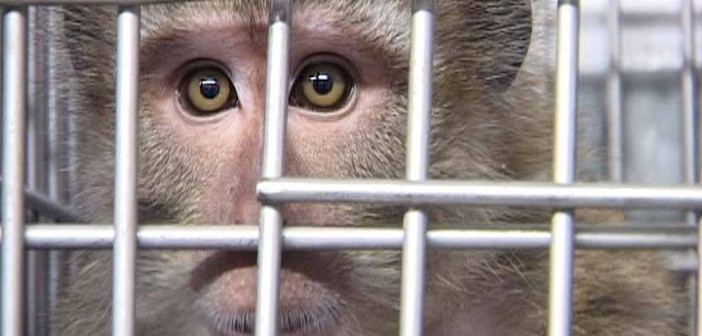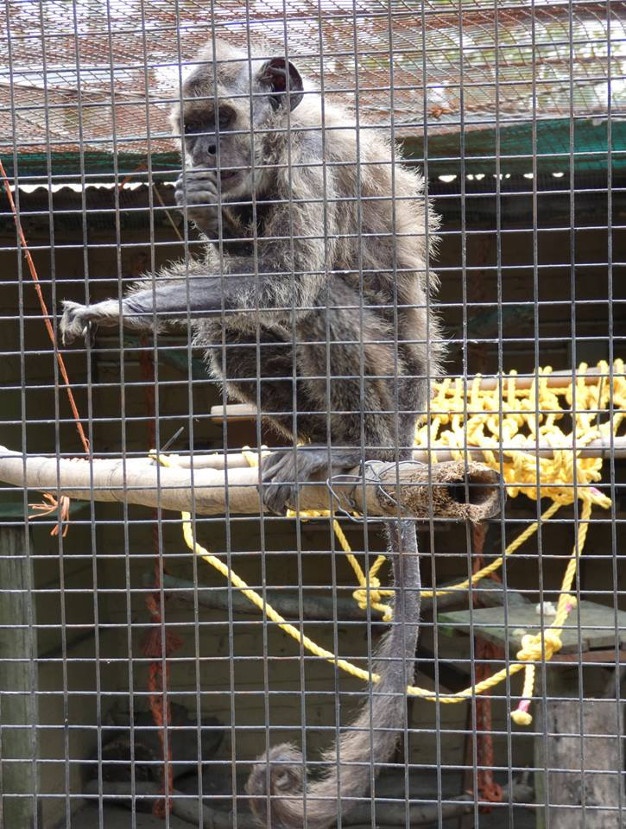East London Zoo plans to get more animals despite global petition to shut down
Posted: Wed Feb 21, 2018 12:06 pm

BY LOUZEL LOMBARD STEYN - 20 FEBRUARY 2018 - TRAVELLER24
The East London Zoo has again come under fire for the poor care of its captive animals with experts saying the neglect has been going on for years. Despite these allegations the zoo plans to get more animals.
According to Siani Tinley, senior manager of the East London Zoo and Aquarium, the recent public outcry – which culminated with a global petition, signed by nearly 114 000 people, and peaceful protest by East London locals calling for the facility to shut down – was an “over exaggeration in terms of welfare, but relevant in terms of general standards needing to be raised”.
Animal welfare issues were exposed in January 2018, when videos and images posted to social media showed some of the animals in seemingly poor living conditions.
Of particular concern with members of the public were the two brown bears, housed in a deep concrete pit with a small water pool and one tree, as well as the jaguar in a bedroom-sized cage, without any shade or trees.
‘A fate worse than death’
Annette Rademeyer of the King Wiliamstown SPCA says the SPCA has for long been “confiscating animals from the zoo that were in such bad condition they had to be put down.
“The wolves had their ears chewed off by flies and were eventually euthanised after an SPCA warning, two lions were very old and arthritic and had to be euthanised, and there they still have a capuchin monkey that is so old and arthritic the best thing for him would be to be put to sleep, but he is being kept alive to entertain the public.”
A staff member at the zoo also says that the capuchin, named Smoochie, only has one tooth remaining.

Smoochie at East London Zoo. (Photo: Rio Ashington)
“The fact is that many of the animals are extremely old and they should be put down. There is sometimes a fate worse than death,” Rademeyer says.
As for the brown bears, which sparked major concern earlier this year, Rademeyer says they are so old their condition cannot be optimal, regardless of the most recent SPCA inspection which found that no contraventions were observed. “In the wild, they only live to about 25 years of age and these bears are 40 and 35, respectively.”
‘Nothing tangible happens’
Tinley, who was appointed in November, says that, as part of their Turn Around Strategy, the zoo “will be addressing species and housing conditions, and other husbandry needs in an order to raise present standards. Actions so far have been simple operational ones such as ethics committees being set up, addressing the need for more staff, vets on site doing basic health assessments and volunteers being included in Zoo projects.”
According to Rademeyer, it is typical of the Buffalo City Metropolitan Municipality to brandish big plans, few of which usually realise. “BCMM have been saying for years that the zoo ‘is a work in progress’ but nothing tangible happens.”
Animals for entertainment in inadequate facilities
The East London Zoo’s membership of the Pan African Association of Zoos and Aquaria (PAAZA) was suspended after an audit in October 2014 found the facility lacking in terms of Minimum Operational Standards.
Rademeyer points to the use of mainly unskilled labour at the zoo due as a major concern in term of animal welfare. “These people have no idea how to ascertain whether an animal is sick or that it needs veterinary attention. There is no training provided, even in basic animal husbandry.”
Apart from this fundamental lack in the training of zoo staff, the animals “also lack any form of interactive equipment that could stimulate,” says Gabrielle Naidoo, veterinary student and one of the recent ‘Stop Cruelty at East London Zoo’ protest organisers.
The Martie Rossouw, NSPCA WPU Manager, agrees, saying “the small, barren enclosures are not designed for the welfare of the animals but rather for the interaction and best view” of visitors.
“Officials tell you that many children come to the zoo who would not have the opportunity to see these animals in the wild,” Rademeyer says. “But what are we teaching the children? That it’s OK to incarcerate animals under such conditions? There is no educational purpose being served because there are not even information boards to inform the public of what they are looking at.”
She says the ethical outcome would be for the animals that can be rehabilitated to be sent to accredited rehab centres. “Those that are old and infirm should be put down – it’s the most humane thing to do.”
Ongoing neglect
The neglect at the zoo surfaced when a chacma baboon named William was found paralysed in his cage by NSPCA staff doing an inspection in May 2017.
According to Arno De Klerk, inspector for the National Council of SPCAs Wildlife Protection Unit (WPU), the baboon had not been able to reach his night quarters and had spent the several nights outside in one spot.
“William moved by dragging his lower body. He had large open wounds and lesions on his buttocks. Flesh had been eroded away. The wounds appeared to be infected and were infested with maggots,” De Klerk says.
William eventually had to be euthanised, according to Rossouw, after a “warning in terms of the Animals Protection Act, requiring the baboon to be examined by a Veterinarian […] was not complied with” by the East London Zoo.
The zoo now faces charges of Animal Cruelty laid in terms of the Animals Protection Act no 71 of 1962, but the case has been provisionally withdrawn pending further investigation.
Bear at East London Zoo. (Photo: Supplied)

Jaguar at East London Zoo. (Photo: Rio Ashington)
The zoo says that, despite the current state of affairs, they are looking to get new animals into enclosures. According to Tinley, “the Turn Around Strategy has put a short moratorium on purchasing any animals, but we are presently upgrading what was the original wild dog enclosure with the intention to get wild dogs.”
Read original article: http://www.traveller24.com/Explore/Gree ... n-20180220